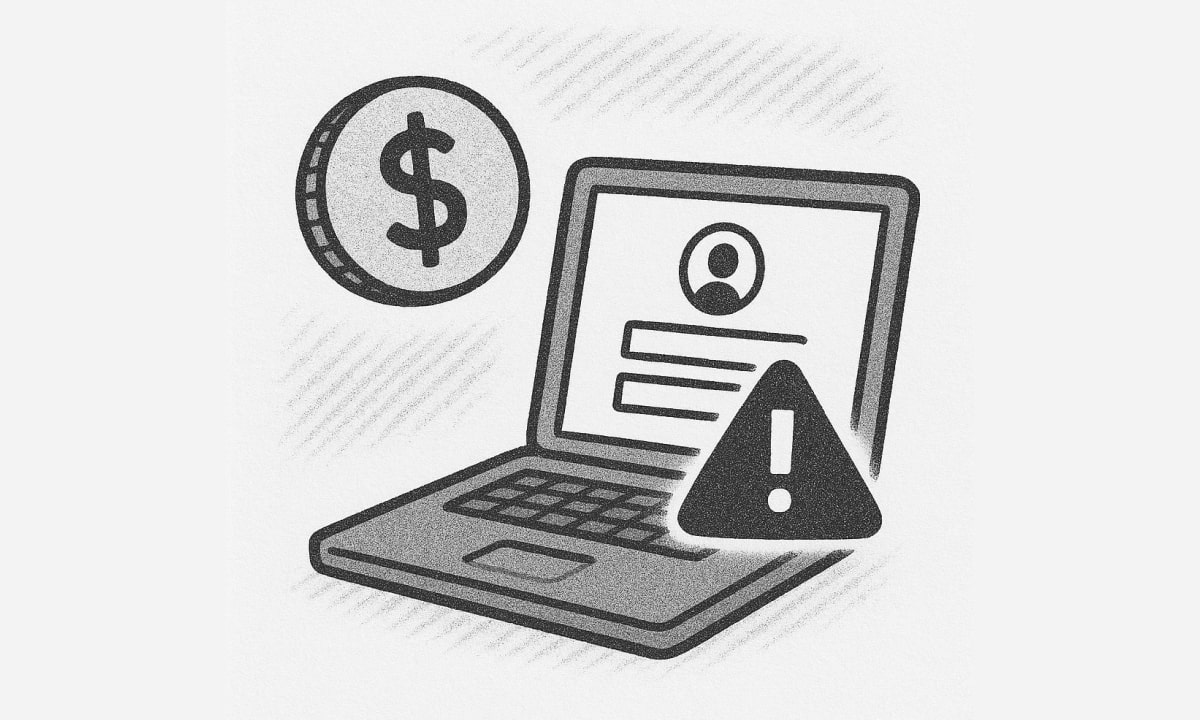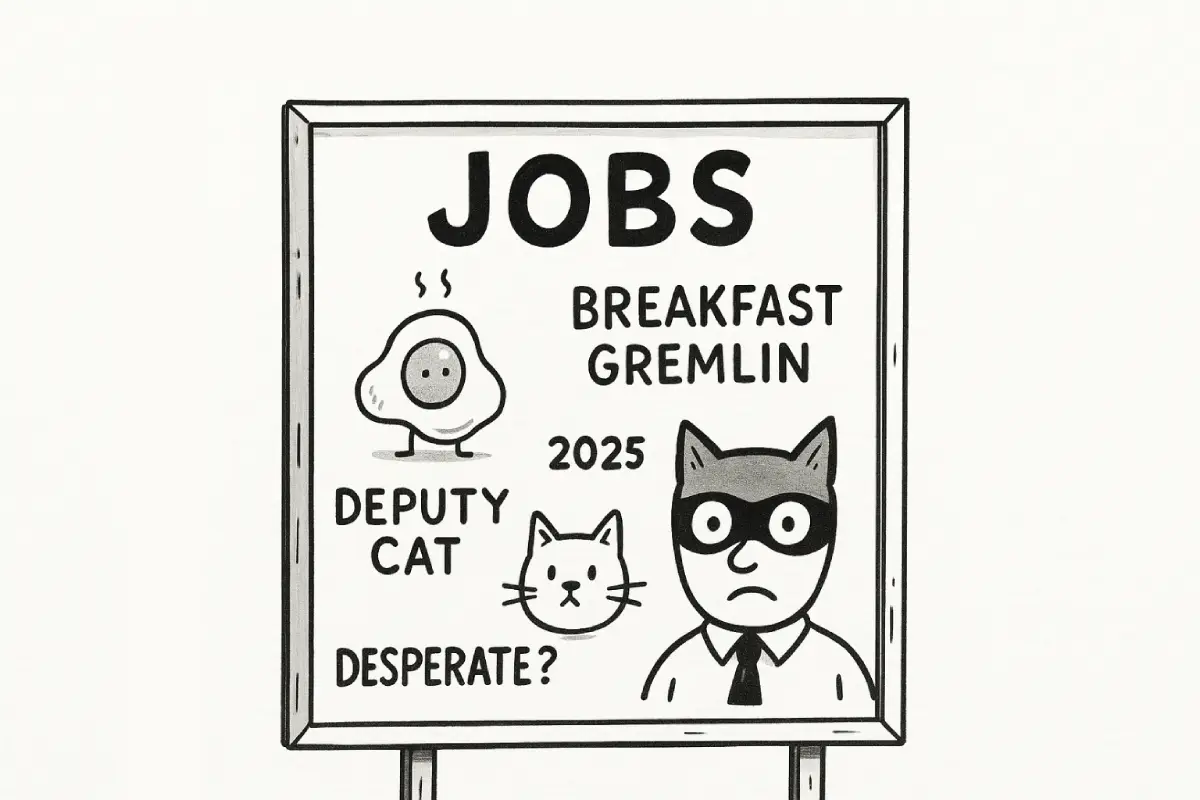Imagine you’re standing at the edge of a bustling job fair, resume in hand, heart pounding with the hope of landing your dream job. The air is thick with ambition, and every booth promises a golden opportunity. But then, a recruiter at one of the flashiest tables leans in and whispers, “For just $50, we can fast-track your application to the top of the pile.” Your gut twists. Something feels off, but the pressure of competition clouds your judgment. You’re tempted to pay, thinking it’s a small price for a big break. Stop right there. That moment of hesitation is your intuition screaming that paying to apply for a job is a trap—one that could cost you far more than money.
Paying to apply for a job is not just a bad idea; it’s a red flag waving in a field of scams, exploitation, and false promises. This article will unpack why handing over your hard-earned cash for a job application is a mistake, explore the psychology and mechanics behind these schemes, and offer practical, actionable alternatives to secure legitimate opportunities. Through real-world examples, analogies, and a narrative thread, we’ll guide you from the temptation of quick fixes to the empowerment of informed job-seeking strategies. Whether you’re a recent graduate, a seasoned professional, or a decision-maker shaping hiring policies, this is your roadmap to navigating the job market with confidence and clarity.
The Allure and the Trap: Why Paying to Apply Feels Tempting
Let’s start with a story. Meet Sarah, a 28-year-old graphic designer laid off from her startup job during a tech industry downturn in 2024. With bills piling up and her savings dwindling, she scours job boards like LinkedIn and Indeed. One day, she stumbles across a sleek website advertising “exclusive” design roles at top-tier firms. The catch? A $75 “processing fee” to submit her application. The site promises priority access to recruiters and a “guaranteed” review by hiring managers. Desperate and dazzled by the prospect of working for a big name, Sarah considers paying. She’s not alone.
The job market is a pressure cooker. According to the U.S. Bureau of Labor Statistics, the unemployment rate hovered around 4.1% in late 2024, with certain industries like tech and retail facing higher volatility (BLS, 2024). For job seekers like Sarah, competition is fierce, and the fear of missing out (FOMO) is real. Scammers exploit this anxiety, crafting sophisticated schemes that prey on desperation. They dangle the promise of a shortcut—a paid application that supposedly bypasses the crowded applicant pool. It’s like being offered a VIP pass at a concert, only to find out the stage is empty.
This tactic works because it taps into a psychological principle called loss aversion. People are more motivated to avoid losses than to achieve gains, as demonstrated in studies by psychologists Daniel Kahneman and Amos Tversky (Kahneman & Tversky, 1979). Paying a fee feels like a small price to avoid the “loss” of missing a dream job. But here’s the truth: legitimate employers don’t charge applicants to apply. Ever. Paying to apply is like buying a lottery ticket for a prize that doesn’t exist.
The Mechanics of the Scam: How It Works
To understand why paying to apply is a losing game, let’s dissect how these schemes operate. Imagine a vending machine that promises a gourmet meal but only dispenses stale crackers—or nothing at all. That’s the job application scam in a nutshell. Here’s how it typically unfolds:
- The Bait: Scammers create professional-looking websites, job postings, or social media ads that mimic legitimate companies. They often use stolen logos or impersonate well-known brands. For example, in 2023, the Federal Trade Commission (FTC) reported a surge in job scams impersonating major corporations like Amazon and Google.
- The Hook: They require an upfront fee—anywhere from $10 to $500—for “application processing,” “background checks,” or “membership” in an exclusive job network. Some even promise “insider access” to unadvertised positions.
- The Vanish: After you pay, one of three things happens:
- You receive nothing—no job, no response, just silence.
- You get a generic “application confirmation” but no real progress.
- Worst-case, they harvest your personal information for identity theft or further scams.
A real-world example: In 2022, a scam targeting remote workers promised high-paying work-from-home jobs for a $99 “registration fee.” Victims reported losing thousands collectively, with no jobs materialized. The scammers disappeared, leaving applicants like Sarah with lighter wallets and heavier hearts.
Why Legitimate Employers Don’t Charge Applicants
Think of the job application process like a two-way audition. You’re showcasing your skills, and the employer is pitching their company as a great place to work. If they’re asking for money upfront, it’s like a theater charging actors to audition—it’s absurd and exploitative. Here’s why legitimate employers never charge:
- Cost of Hiring: Companies already budget for recruitment, spending an average of $4,700 per hire on advertising, interviews, and onboarding, according to the Society for Human Resource Management. They don’t need your money to cover costs.
- Reputation Risk: Charging applicants signals desperation or unprofessionalism, damaging the company’s brand. Top employers like Microsoft or Deloitte thrive on attracting talent, not extorting it.
- Legal Issues: In the U.S., charging application fees can violate labor laws or anti-discrimination regulations, as it may disproportionately exclude low-income applicants (EEOC).
If a company is legitimate, they’re investing in you as a potential asset, not treating you like a cash machine.
The Hidden Costs of Paying to Apply
Paying to apply doesn’t just drain your bank account; it erodes your confidence, wastes your time, and exposes you to risks. Let’s break it down:
- Financial Loss: Fees range from modest ($20) to exorbitant ($1,000 for “executive” roles). For someone like Sarah, even a small fee stings when multiplied across multiple applications.
- Time Wasted: Job seekers spend an average of 11 hours per week on applications. Chasing scams diverts time from legitimate opportunities.
- Data Theft: Scammers often request sensitive information—Social Security numbers, bank details, or addresses—under the guise of “background checks.” In 2024, identity theft affected 1.1 million Americans, with job scams as a growing vector.
It’s like stepping into quicksand: the more you struggle, the deeper you sink. Sarah, for instance, paid $75 only to receive a generic PDF “job guide” worth nothing. Worse, her email was flooded with spam, a sign her data was sold.
Spotting the Red Flags: How to Identify a Scam
Knowledge is your shield. Here are key warning signs to watch for, framed through Sarah’s experience:
- Upfront Fees: Any request for payment to apply, interview, or “secure” a job is a scam. Sarah’s $75 fee was a classic example.
- Too-Good-to-Be-True Promises: Jobs offering high pay for minimal experience or “guaranteed” placement are suspect. Legitimate roles require qualifications, not cash.
- Vague Details: Scam postings often lack specifics about the role, company, or hiring process. Sarah’s “exclusive” job site had no verifiable contact information.
- Pressure Tactics: Scammers push urgency, like “Pay now, or the job’s gone!” Legitimate employers give you time to research and apply.
- Unprofessional Communication: Typos, generic emails, or unverified domains (e.g., @careers-opportunity.net) are red flags.
A quick analogy: Think of job hunting like online dating. If someone demands money before the first date, you’d run. The same logic applies here.
What to Do Instead: Smart Job-Search Strategies
Now that we’ve exposed the trap, let’s empower you with alternatives. Sarah learned the hard way, but you don’t have to. Here’s a roadmap to find legitimate jobs without spending a dime:
1. Use Reputable Job Platforms
Stick to trusted sites like:
- LinkedIn: Offers robust networking and verified company profiles. Over 80% of job seekers use LinkedIn, with 40 million weekly users (LinkedIn, 2024).
- Indeed/Jobicy: Aggregate thousands of verified listings with company reviews.
- USAJobs.gov: For federal jobs, with no fees and transparent processes.
Pro Tip: Use filters to narrow roles by experience, location, or industry. Sarah found her next gig by tailoring her LinkedIn profile and connecting with recruiters directly.
2. Network Strategically
Networking is like planting seeds—you nurture connections, and opportunities grow. Attend industry events, virtual webinars, or alumni meetups. According to a 2023 survey, 85% of jobs are filled through networking. Reach out to professionals on LinkedIn with personalized messages, like:
“Hi [Name], I admired your recent post on [Topic]. I’m a graphic designer exploring opportunities in [Industry]. Could we chat about your experience at [Company]?”
Sarah landed an interview by messaging a design director who appreciated her portfolio.
3. Verify Employers
Before applying, research the company:
- Check their official website and cross-reference job postings.
- Search for reviews on Glassdoor or the Better Business Bureau.
- Contact the company’s HR department to confirm the role’s legitimacy.
Sarah avoided another scam by emailing a company’s official HR address, only to learn the “job” she saw was fake.
4. Build a Strong Application
Invest in your resume and cover letter. Use tools like:
- Canva: Free templates for professional resumes.
- Grammarly: Polishes your writing for clarity.
- Portfolio Sites (e.g., Behance for designers): Showcase your work.
Sarah revamped her portfolio, highlighting projects that aligned with her target roles, which caught a recruiter’s eye.
5. Upskill for Free or Low Cost
Instead of paying for a job application, invest in skills. Free or affordable platforms include:
- Coursera/Google Career Certificates: Affordable courses in tech, marketing, and more.
- edX: Free courses from universities like MIT and Harvard.
- YouTube: Tutorials on everything from coding to public speaking.
Sarah took a free UX design course, adding a certification that made her stand out.
6. Report Scams
If you encounter a scam, report it to:
- FTC: File a complaint at ReportFraud.ftc.gov.
- BBB Scam Tracker: Share details to warn others (BBB.org/ScamTracker).
- Job Platforms: Flag suspicious listings on Jobicy or LinkedIn.
Reporting helps protect others and holds scammers accountable.
For Decision-Makers: Why This Matters to Employers
If you’re a hiring manager or executive, the prevalence of job scams affects your organization too. Scammers impersonating your brand can:
- Damage Reputation: Applicants like Sarah may distrust your company if scammed under your name.
- Reduce Talent Pool: Legitimate candidates may avoid applying, fearing fraud.
- Increase Costs: Addressing scam fallout diverts resources from recruitment.
To combat this, adopt transparent hiring practices:
- Clearly list jobs on your official website and verified platforms.
- Educate applicants about your free application process.
- Monitor and report fraudulent postings using your brand.
In 2024, companies like Amazon partnered with the FTC to shut down scam sites misusing their name, protecting both applicants and their reputation.
The Bigger Picture: Empowering Your Job Search
Let’s circle back to Sarah. After her $75 mistake, she regrouped. She reported the scam, refined her LinkedIn profile, and networked with local designers. Within two months, she landed a role at a mid-sized agency—not through a shady website, but through a referral from a contact she met at a virtual design conference. Her story isn’t just about dodging a bullet; it’s about reclaiming control.
Paying to apply for a job is like buying a map to a treasure that doesn’t exist. The real treasure—your dream job—lies in leveraging free resources, building genuine connections, and staying vigilant. The job market is tough, but it’s not a casino. You don’t need to gamble your money or your trust. Instead, invest your energy in strategies that work: research, networking, and skill-building.
For the general public, this is a call to stay savvy and skeptical. For decision-makers, it’s a reminder to make hiring transparent and accessible. Together, we can dismantle the traps and build a job market where talent, not cash, opens doors.
You might also like: The Funniest Job Ads of 2025 (Yes, They’re Real)









